
Honda Cliq vs TVS XL 100 - Spec Comparison
- Jun 21, 2017
- Views : 28988

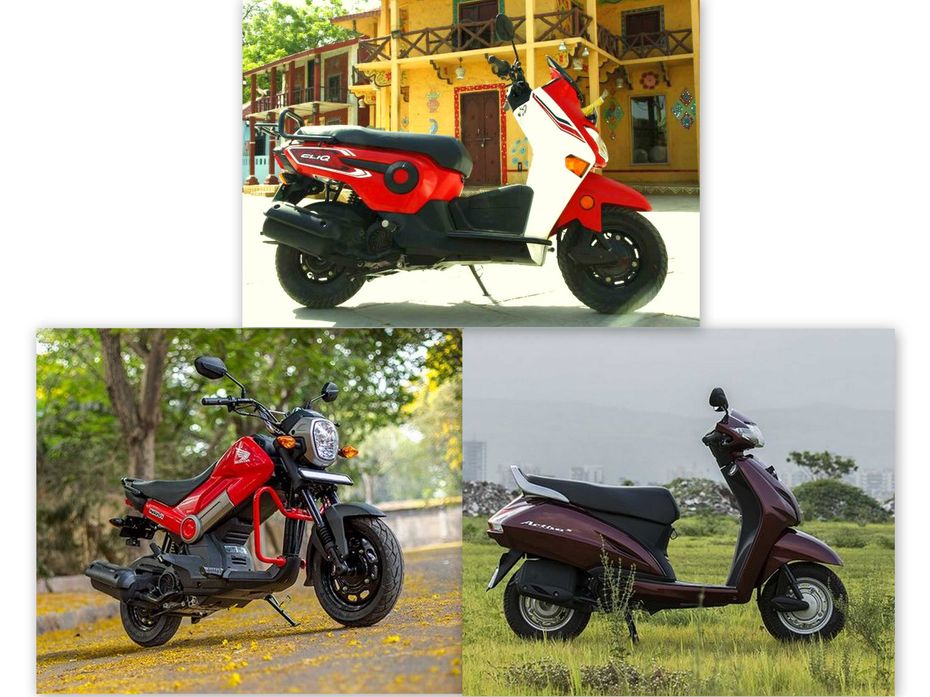
The Cliq has entered the market with a focus on revolutionizing the way customers in rural areas travel. However, after our recent first ride experience, we felt otherwise, as the product seems to be more suited to managing city duties instead of taking on the rural areas. Talking about cities, we also come across two of Honda’s very well known and potent products on offer, the Activa 4G, and the Navi, both of which manage city duties effortlessly, despite being built for a different target audience. So, considering these basic aspects, it was time for us to find out if the Cliq makes for a good fit in the range on offer. Read our review on Cliq here.
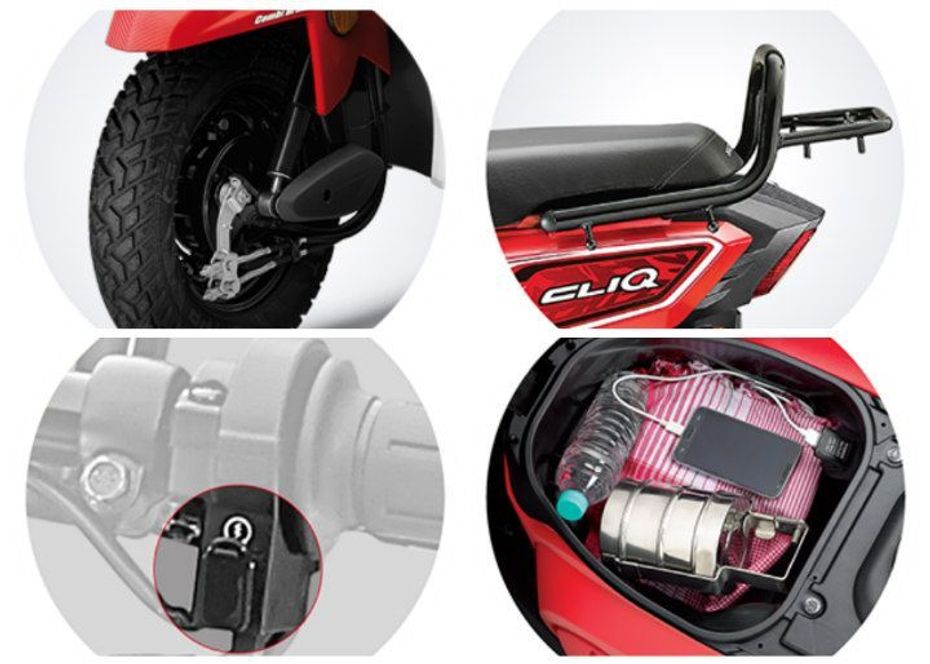
Cycle Parts:
The Honda Cliq comes with a similar suspension setup as the Activa 4G, which is a bottom-link hydraulic suspension at the front and a single shock absorber at the rear.
The Navi, on the other hand, features telescopic front forks, while the rear houses a monoshock.
Braking duties on the three are managed by 130mm drums on both ends. However, the Navi doesn’t get CBS (Combi Brake System) equipped brakes, found on the Cliq and Activa 4G, which works efficiently and provides better stopping power.
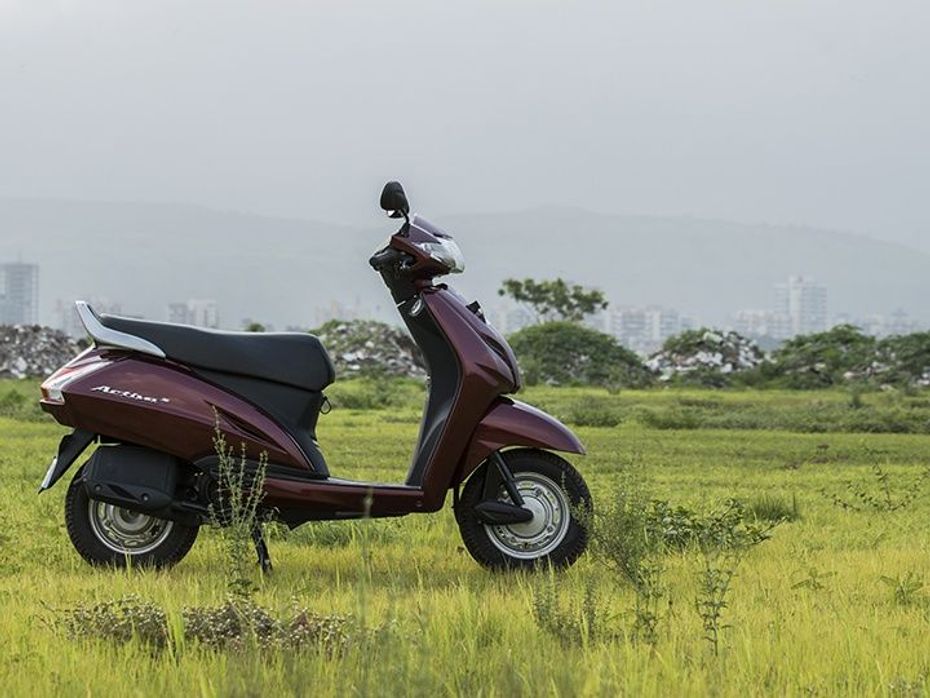
What makes the Cliq stand out over the Activa and the Navi are its industry-first special block tread tubeless tires from Ceat, which enable it to handle both on and off road duties decently. On the other hand, the Activa and Navi get MRF tubeless tires that are more suited to the tarmac.
That said, the Cliq and the Activa get 10-inch steel rims on both ends while the Navi gets 12-inch rims up front, making the front slightly heavier, offering more confidence in corners, while the rear gets the standard 10-inch wheels.
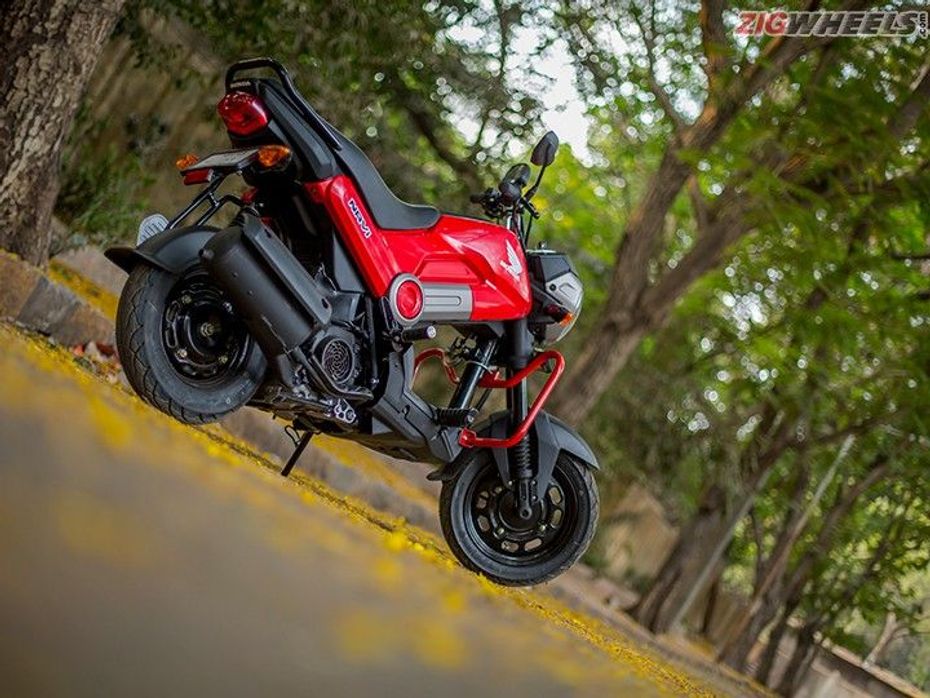
Engine:
Mated to a CVT gearbox, the Honda Cliq shares its four-stroke, carburetor-fed, air-cooled, 109.19cc engine with the Honda Activa 4G and the Honda Navi. However, as seen here, the power and torque figures differ marginally, as the Cliq produces 8.03PS of power at 7000rpm, with peak torque of 8.94rpm generated at 5500rpm. The Activa 4G, though, generates 7.96PS of power at 7500rpm, while peak torque of 9Nm comes in at 5500rpm. The Navi, on the other hand, pumps out 7.94PS of power at 7000rpm, while 8.96Nm of peak torque kicks in at 5500rpm.
Even though the above figures seem different on the chart, there isn’t much difference when it comes to real-world riding experience.
The top speed of 83kmph on the Cliq is similar to that on the Activa, while the Navi has a top speed of 81kmph. All three two-wheelers also come with a kick-starter and self-starter as standard, making them hassle-free commuters to live with.
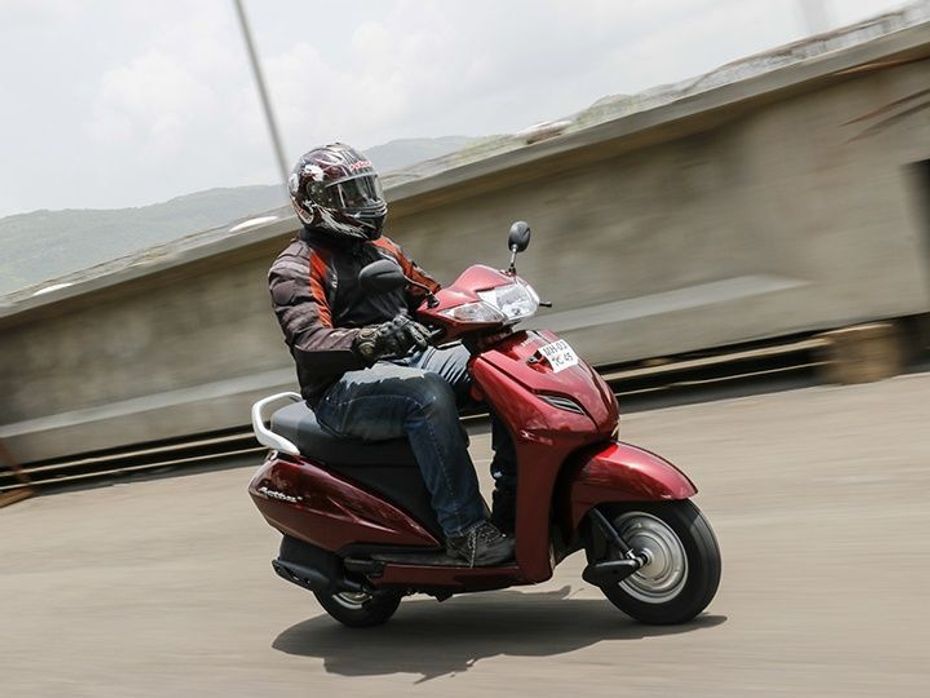
Dimensions & Features:
The Cliq gets a wheelbase of 1241mm, which is 3mm more than the Activa 4G’s 1238mm. The Navi here gets the longest wheelbase of 1286mm.
The shorter wheelbase on the Cliq and the Activa make them easier to maneuver and flick around in the city, with a compromise on stability around corners and at high speeds, which is not the case with the Navi, as the longer wheelbase makes it a more stable ride to manage as well.
The seat height on offer on the Cliq is 743mm, which is the lowest among the three, as both the Activa 4G and the Navi seat the rider 22mm higher at 765mm, thus, making the Cliq a lot more accessible to shorter riders.
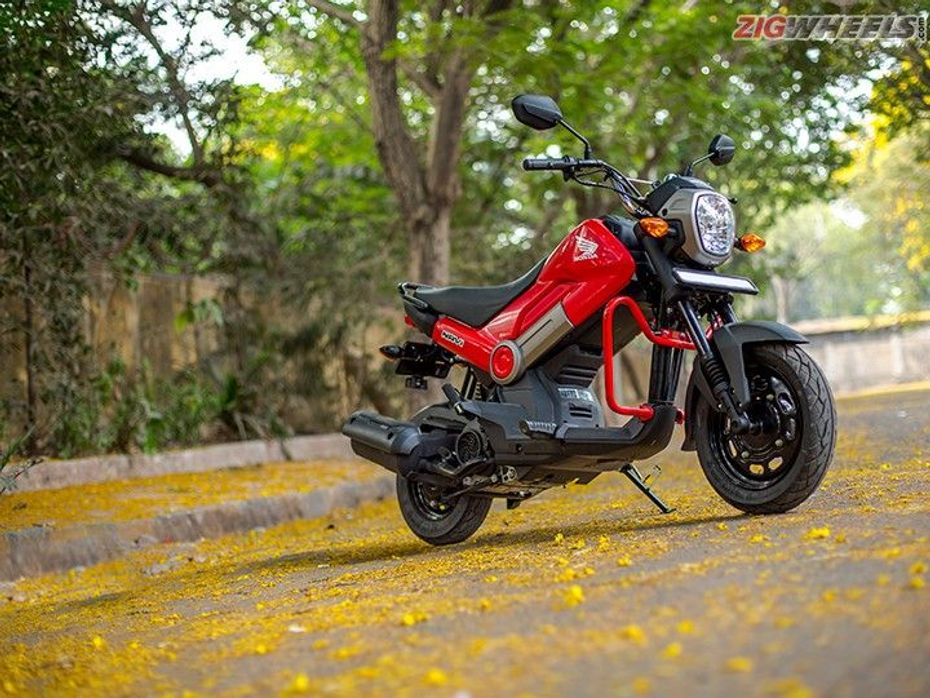
The Cliq gets plastic body panels instead of a sturdy metal body, which can’t take much beating in the real world, but does make the scooter a lot lighter as it weighs in at 102kg, which is 6kg lighter than the Activa 4G that tips the scale at 108kg kerb weight, but also makes it more rugged due to the metal body provided. However, the Navi is the lightest here with a kerb weight of 101kg, thanks to the minimalistic design approach by Honda.
The fuel tank capacity provided on the Cliq is only 3.5 litres, the least of the lot, as the Activa gets a 5.3-litre fuel tank, while the Navi comes with a 3.8-litre tank capacity. This hints at the fact that the Cliq will prove to be a better city scooter, similar to the Navi, as they both restrain the rider from traveling long distances.

There is a range of add-on accessories on offer by Honda for all three variants. The optional extras on the Cliq consist of a mobile charger in the under-seat storage, front visor, floor cover, center box, cap cover and a rear grip. There is a small rear load carrier on offer as well.
While there is basic range of accessories on offer for the Activa, which include options like a side stand, seat cover, body cover, etc; the Navi can be customized with three different customization options on offer that includes, Chrome, Adventure, and Color Customization.
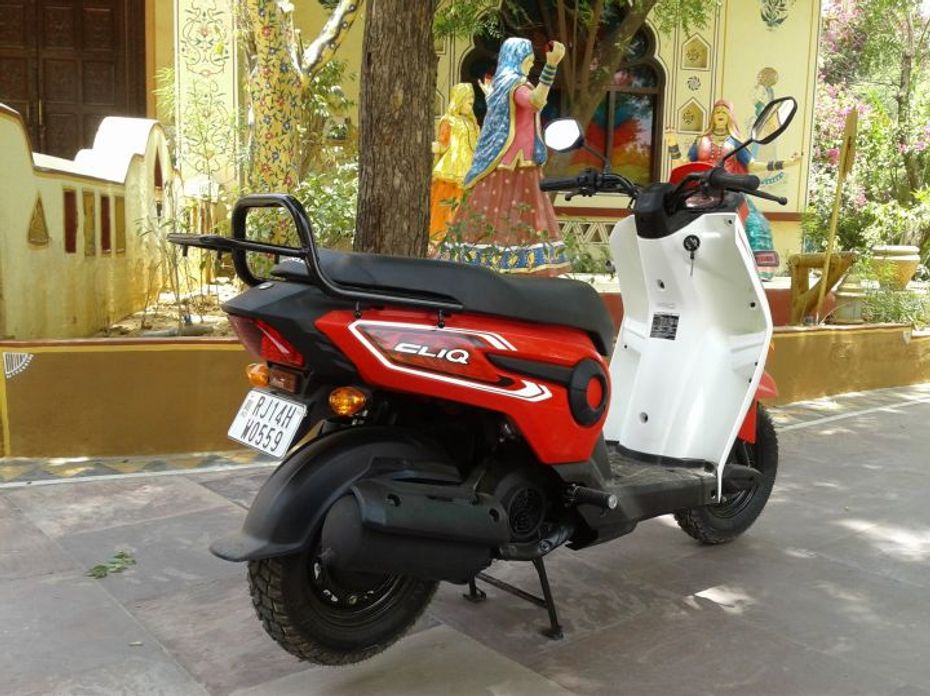
Conclusion:
The Honda Cliq proves to be a scooter not meant for the rural landscape, as it may appeal more to a relatively younger audience that wants the flamboyance and affordability offered by the Navi, but with the convenience factor that the Activa 4G provides.

Honda Cliq vs TVS XL 100 - Spec Comparison

Honda Activa 5G vs Hero Maestro Edge: Spec Comparison

Honda Activa 5G vs TVS Jupiter: Specifications Comparison

Honda Activa 5G vs Activa 125: Spec Comparison

Top Five Facts About Honda Cliq

Honda Cliq Scooter Launched at Rs 42,499
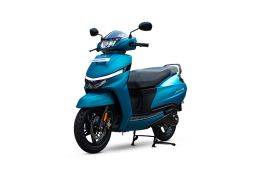 TVS Jupiter
TVS Jupiter
India's largest automotive community
 Two-Wheeler News Wrapup: Royal Enfield Goan Classic 350, Honda Activa Electric, Royal Enfield Continental GT 750, TVS Apache RTR 160 4V, and more
Two-Wheeler News Wrapup: Royal Enfield Goan Classic 350, Honda Activa Electric, Royal Enfield Continental GT 750, TVS Apache RTR 160 4V, and more
 BREAKING: Royal Enfield Goan Classic 350 Launched At Rs 2.35 Lakh
BREAKING: Royal Enfield Goan Classic 350 Launched At Rs 2.35 Lakh
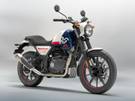 BREAKING: Royal Enfield Scram 440 Unveiled at Motoverse 2024
BREAKING: Royal Enfield Scram 440 Unveiled at Motoverse 2024
 EXCLUSIVE: Lectrix NDuro Spied for the First Time
EXCLUSIVE: Lectrix NDuro Spied for the First Time
 Honda Activa 6G
Rs. 76,684
Honda Activa 6G
Rs. 76,684
 Honda Activa 125
Rs. 80,256
Honda Activa 125
Rs. 80,256
 Honda Dio
Rs. 71,212
Honda Dio
Rs. 71,212
 Honda Dio 125
Rs. 84,851
Honda Dio 125
Rs. 84,851
 Honda SP 125
Rs. 87,468
Honda SP 125
Rs. 87,468
 Honda Shine
Rs. 81,251
Honda Shine
Rs. 81,251
 Honda Unicorn
Rs. 1.11 Lakh
Honda Unicorn
Rs. 1.11 Lakh
 Honda SP160
Rs. 1.18 Lakh
Honda SP160
Rs. 1.18 Lakh
 Honda Hornet 2.0
Rs. 1.40 Lakh
Honda Hornet 2.0
Rs. 1.40 Lakh
 Honda Activa 6G
Rs. 76,684
Honda Activa 6G
Rs. 76,684
 Suzuki Access 125
Rs. 80,700
Suzuki Access 125
Rs. 80,700
 TVS Jupiter
Rs. 73,700
TVS Jupiter
Rs. 73,700
 TVS NTORQ 125
Rs. 86,841
TVS NTORQ 125
Rs. 86,841
 Honda Activa 125
Rs. 80,256
Honda Activa 125
Rs. 80,256